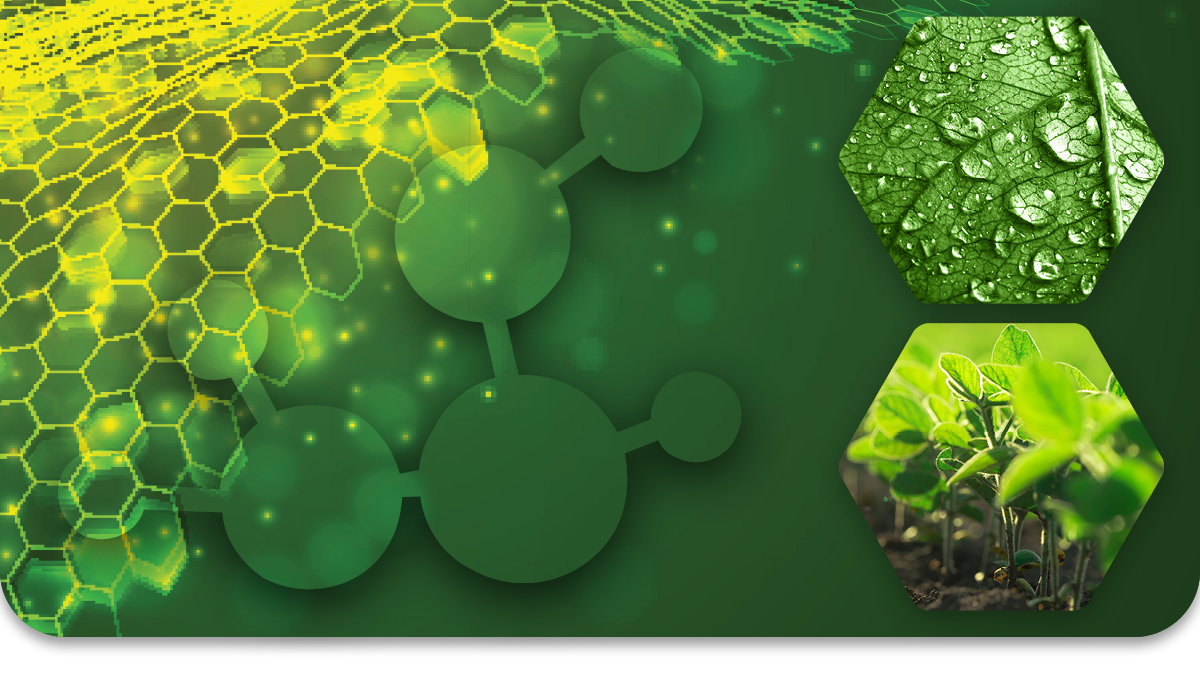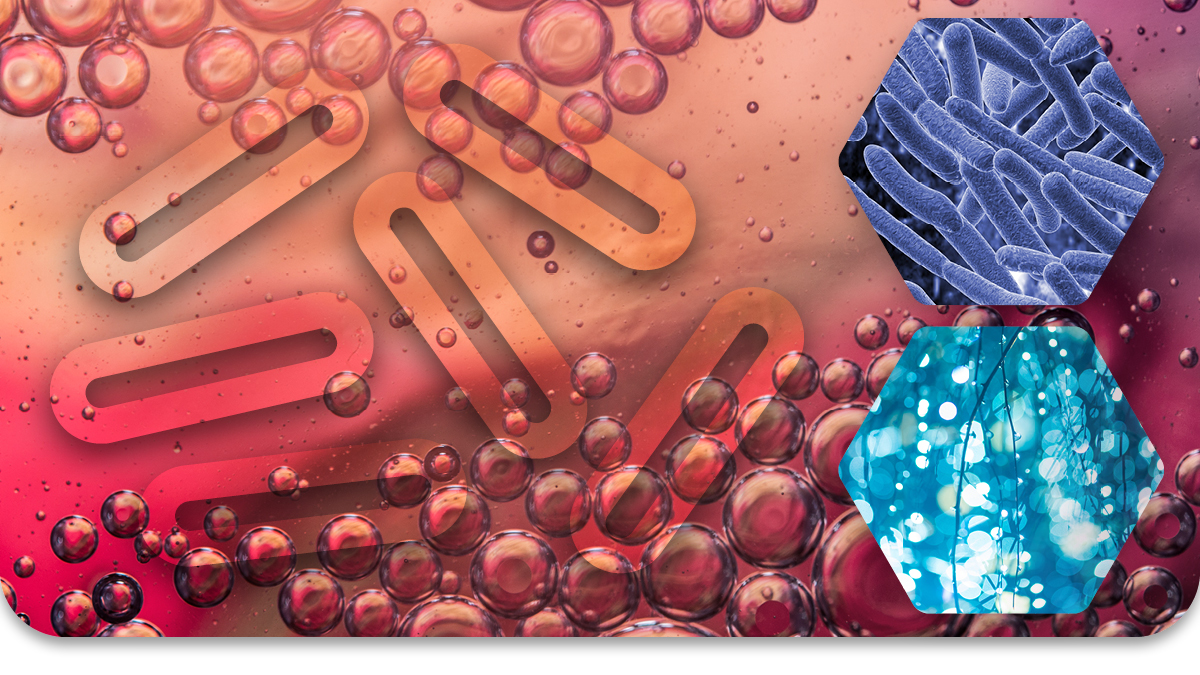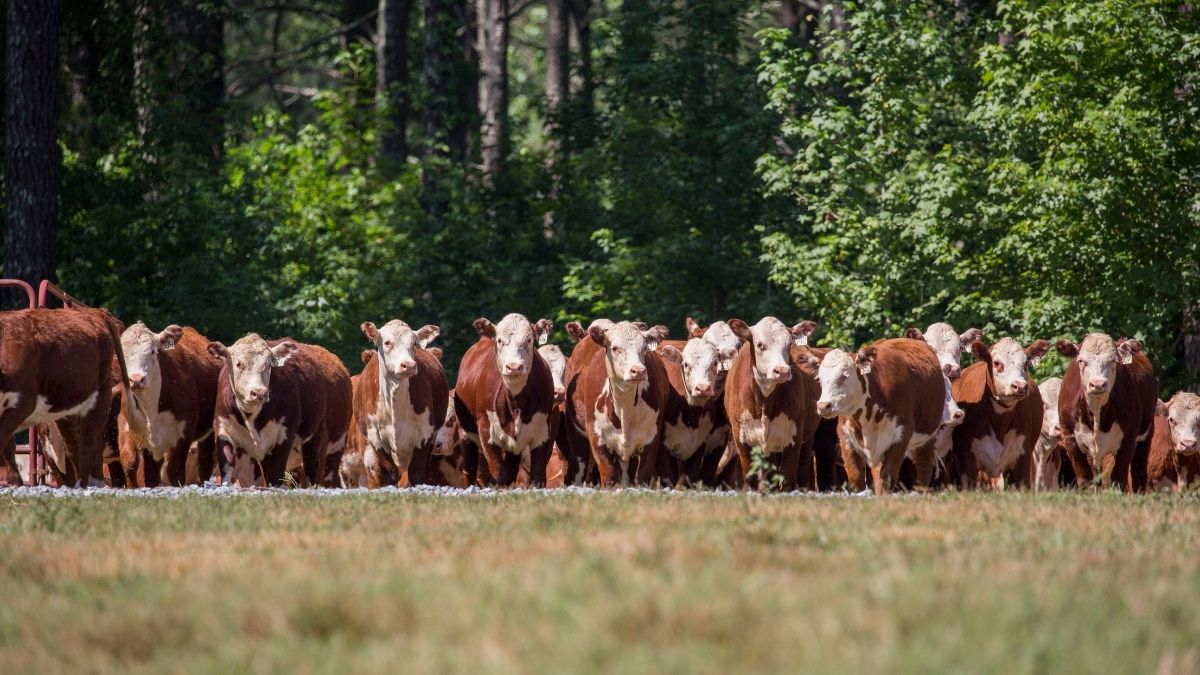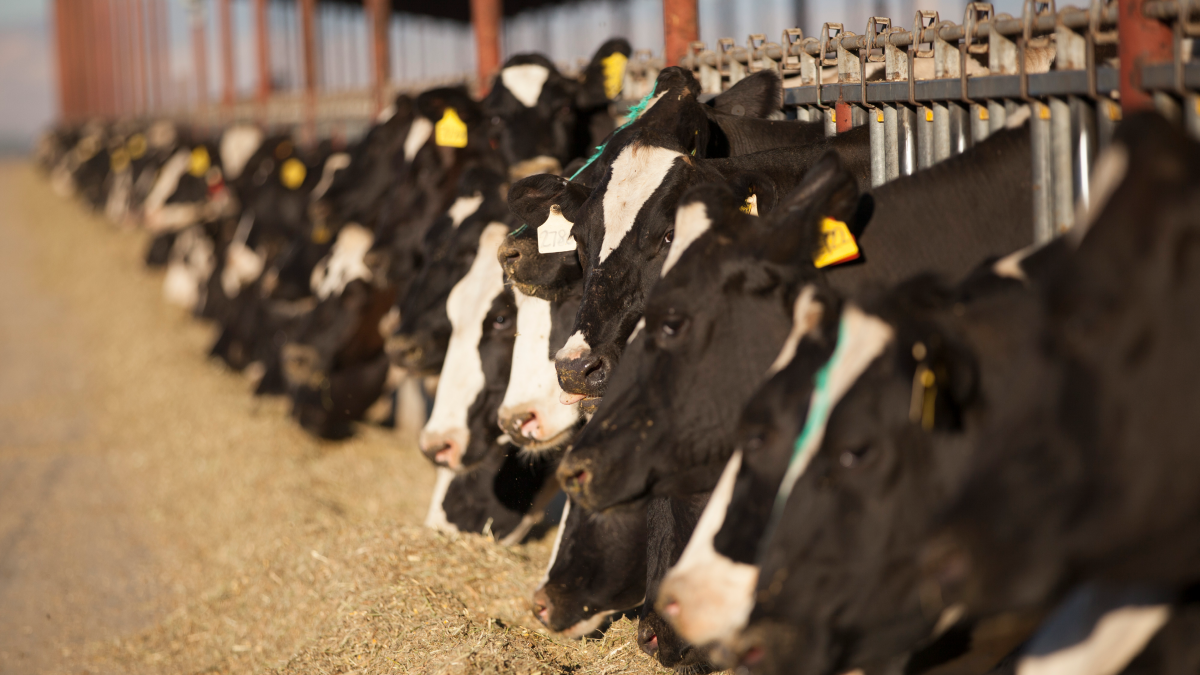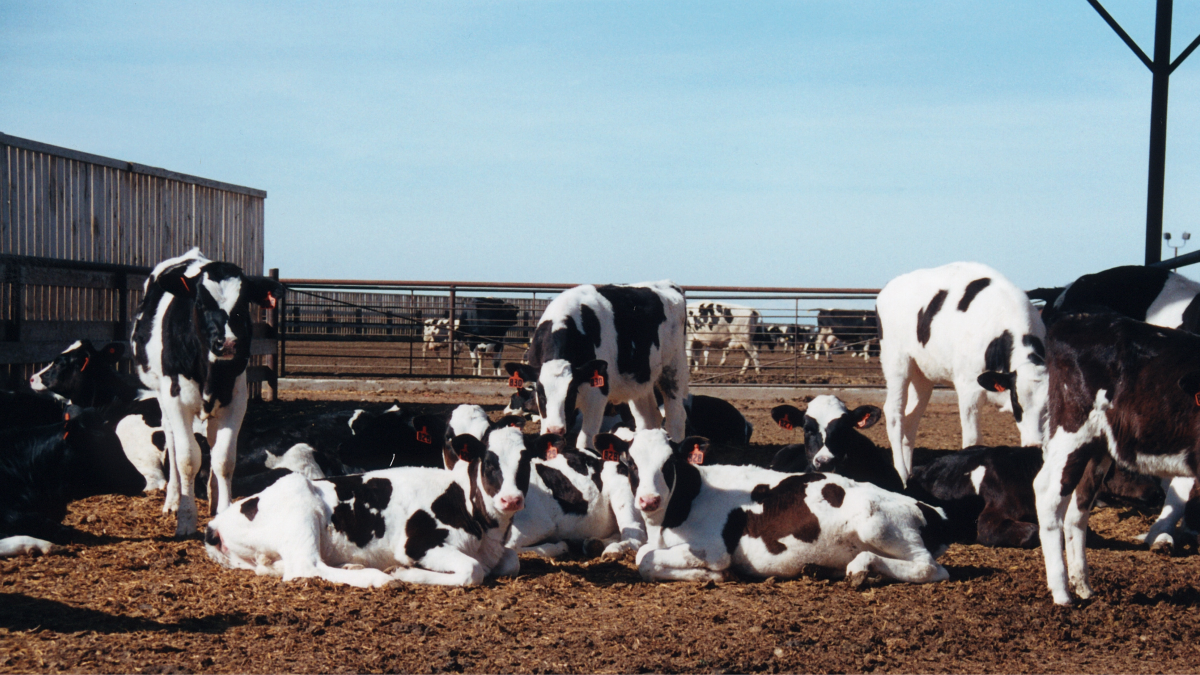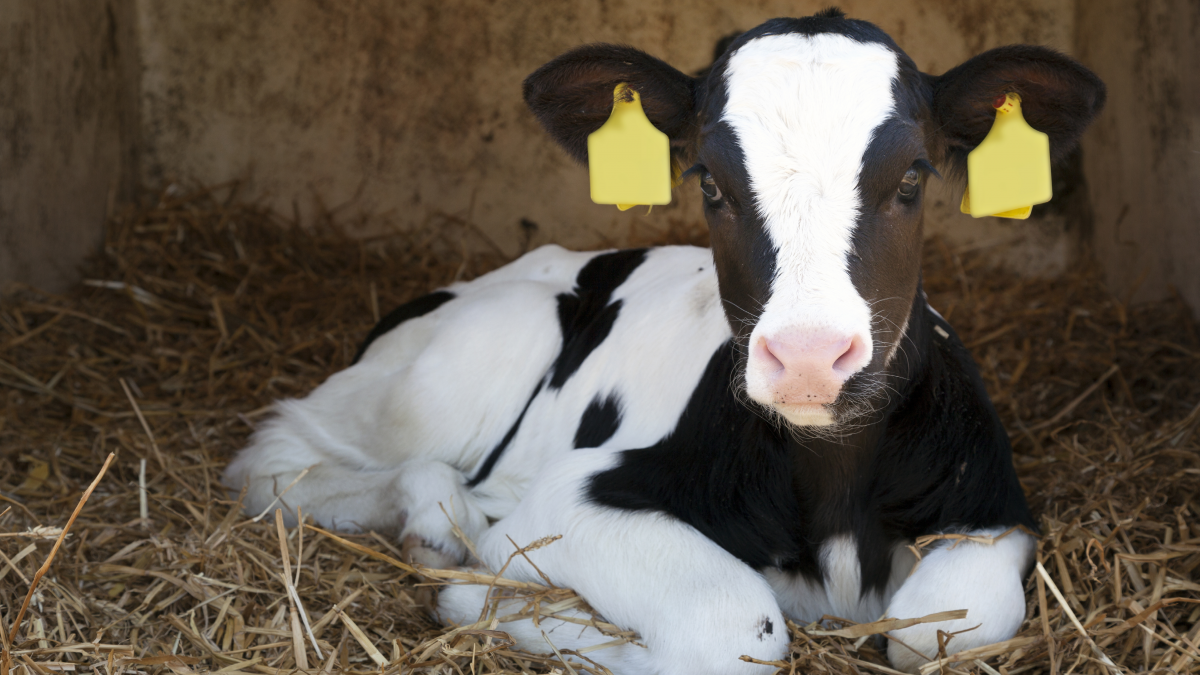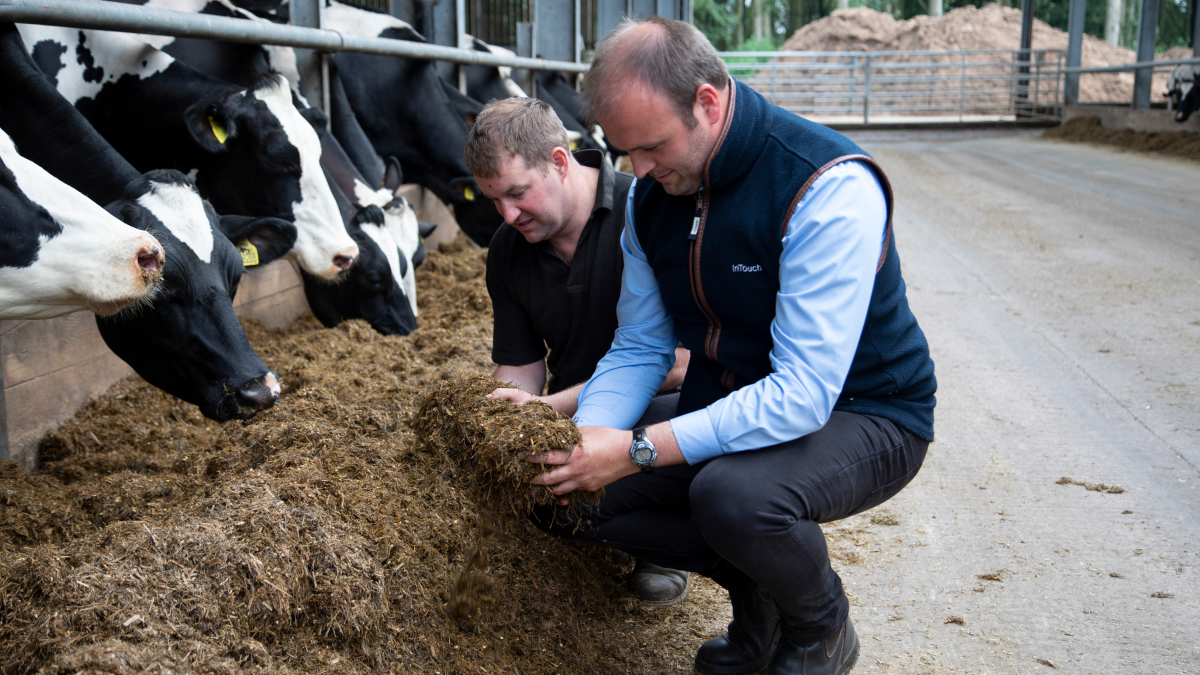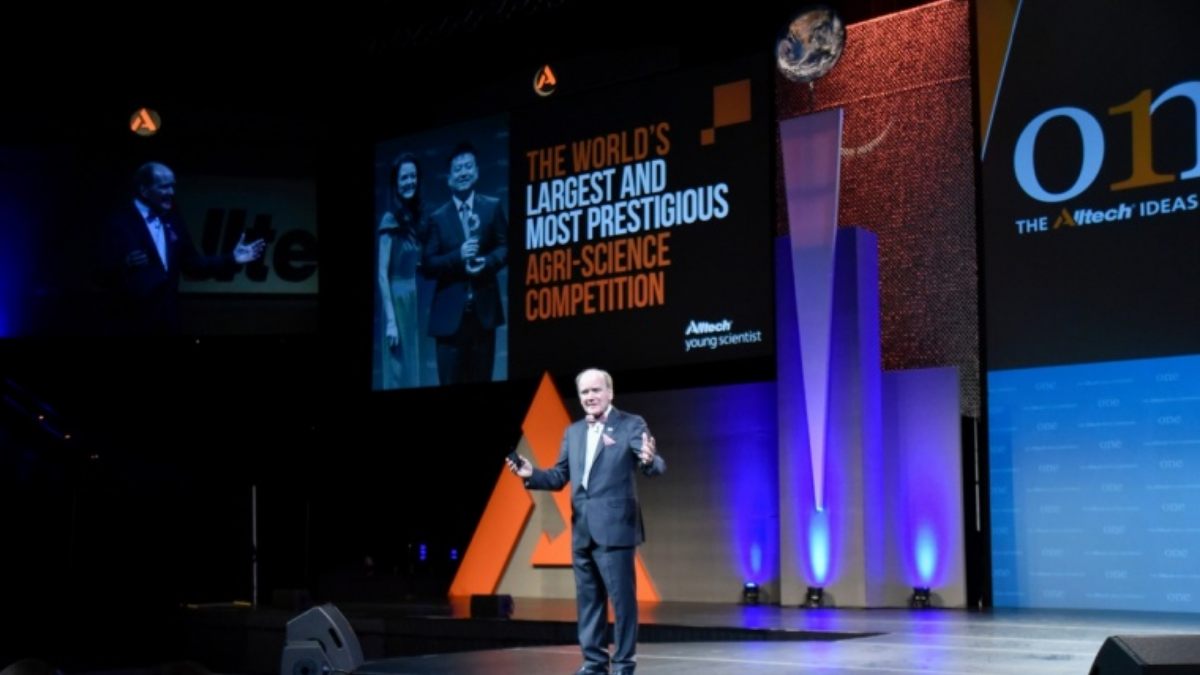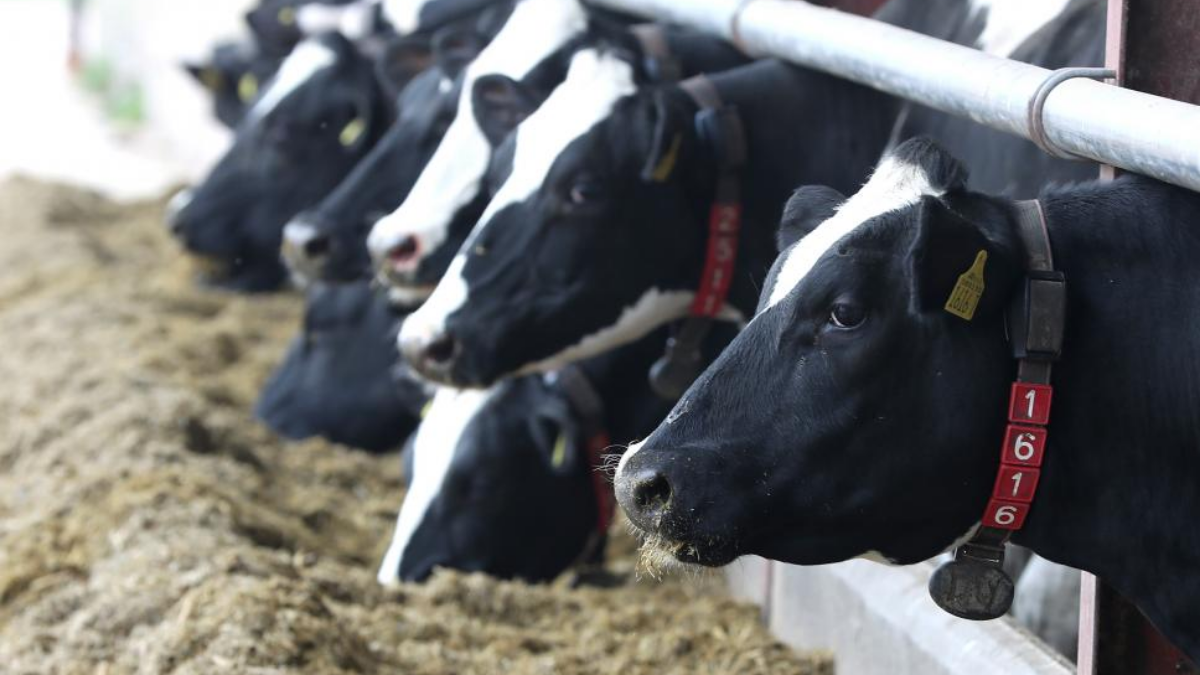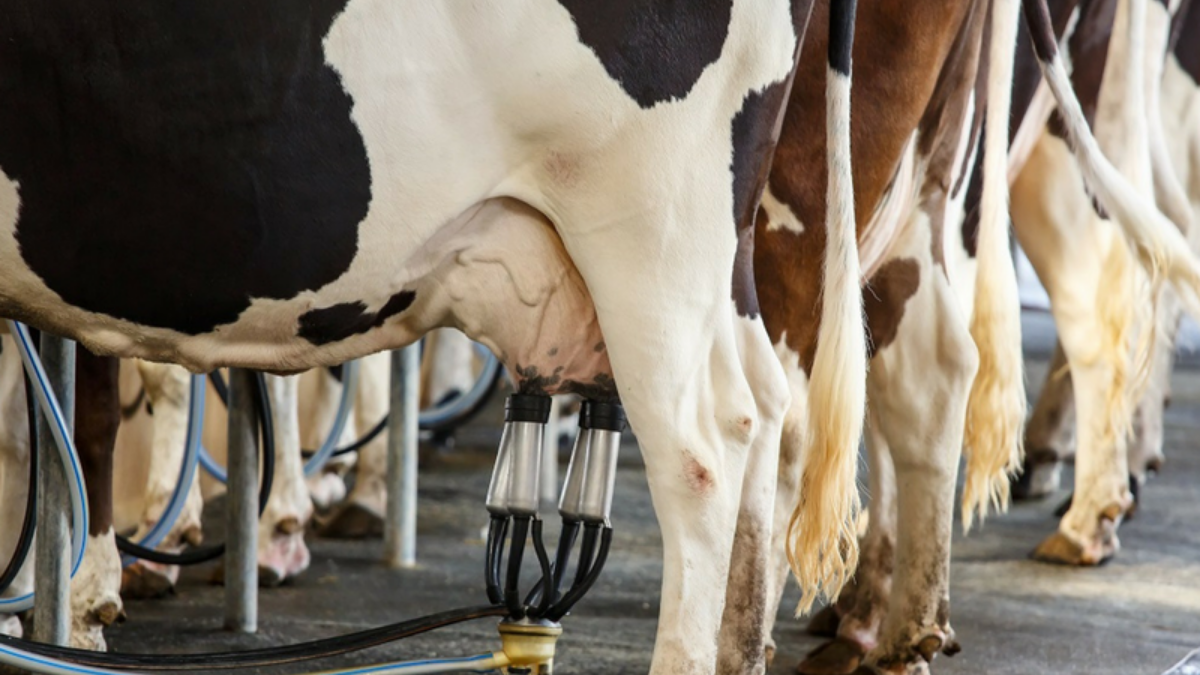In this episode of Ag Future, we revisit Alltech's affiliated session at the UN Food Systems Pre-Summit. Led by Dr. Vaughn Holder, ruminant research director at Alltech, the expert panel discussed ensuring food security for a rising population while protecting the earth's natural resources.
The following is an edited transcript of Alltech's affiliated session at the UN Food Systems Pre-Summit. Click below to hear the full audio or listen to the episode on Apple Podcasts or Spotify
Tom: Welcome to AgFuture, presented by Alltech. Join us as we explore the challenges and opportunities facing the global food supply chain and speak with experts working to support a Planet of Plenty.
The food we eat brings us together as families, communities and nations. It underpins our cultures, our economies and our relationships with the natural world. The U.N. Food Systems Pre-Summit was recently held to unleash the power of food to deliver progress on all 17 of the U.N. Sustainable Development Goals.
Alltech was selected to host a session during the Pre-Summit event, which featured a robust panel discussion around ensuring food security for a rising population while protecting the earth's natural resources. The following is the audio recording of their conversation, which was led by Dr. Vaughn Holder, ruminant research director at Alltech.
Dr. Holder: Well, welcome folks. It's 1:30 (p.m.) here Kentucky time, from sunny Kentucky, and welcome to you, whenever you are and from wherever you are. I guess there’s some “Good afternoons” and “Good evenings” at least, that I know of, but probably a few “Good mornings,” as well.
So, I really appreciate folks getting onto this call. It's probably a pretty important topic that we’re discussing today as a part of this United Nations Food Systems Summit. This is the Pre-Summit, and we're talking about pretty important conversations that affect the future of food production in this world. So, I very much appreciate (that) everyone is here because they want to contribute to this conversation.
So, I'm going to give you a couple of ground rules for the discussion today. There's going to be a completely open discussion in the chat. That's a place where we can have conversations about the topic today. Let's keep it kind and let's keep it civil in the chat. We’re all here for the same reason, although we may sometimes have opposing viewpoints. So, bear that in mind. If you do have specific questions for the speakers, please post those in the Q&A section. We will try to get to some of those at the end of the webinar today, but if not, certainly, those conversations can be carried on offline as well.
Finally, there will be a recording of this webinar available. We’ll probably send that out tomorrow morning, early Wednesday morning, so that will be available as well.
So, I’m Vaughn Holder. I'm the ruminant research director here at Alltech. We submitted these series of questions or this topic to the United Nations for consideration. I’m very happy to be discussing this here today.
So, this is the U.N. Food Systems Summit, obviously. And what’s the point of this whole thing? Well, we're talking about the future of food systems to deliver progress on all 17 of the Sustainable Development Goals, and those will (all) need to be considered for all factors of this conversation, but we will be focusing very much on the Zero Hunger goal as we talk about protein security, as well as good health and well-being and responsible production.
We’re all looking to make healthier and more sustainable and equitable food systems — and very importantly, this all has to be evidence-based and (can only be accomplished by) taking scientific approaches to these transformations. This is what we're trying to do: We’re trying to ensure that we can provide for the nearly 10 billion people that we expect to have on this planet in 2050. So, (that’s) no small task at hand for us. (These are) really important discussions, and it's taken seriously.
So, just to break down, very briefly, what the topic covers here, we’re talking about global resource use efficiency for protein production systems. We're talking, really, about using what we have available to us to create protein in the world. Right? We're talking about the fact that we only have one planet, we have limited resources on that planet, and how shall we be distributing the resources that we have available to us to best serve the food security of the future? That’s what it’s all about.
I’ve gathered a panel of people that are much more qualified than I to address this topic. We will go through them one by one. Sara Place, chief sustainability officer at Elanco Animal Health — welcome and thank you, Dr. Place. Dr. Tryon Wickersham from Texas A&M has studied protein metabolism almost all his life, I imagine. Welcome, Dr. Wickersham, and thank you. (Next), Amanda Radke — we wanted to have some representation from the producer side of things, (which is) very important, with so many people all over our planet being involved directly in production agriculture. But she’s also a very busy lady. She’s an author of materials online, of blogs, but is also a children’s author of very good children’s books. So, Amanda, thank you and welcome. And finally, Dr. Jude Capper, chair in sustainable beef production at Harper Adams (University) and a sustainability consultant. Again, welcome and thank you, Dr. Capper.
So, the point of this is to have a discussion and not a slideshow. So, I am going to discontinue those right now and will start the discussion. I think we talk a lot about that 9 or 10 billion people (who will be on the planet) in 2030, but I think it serves us well to start the conversation with where we actually are right now and understanding what protein security actually looks like in the world right now. It’s very important we start there before we start to decide how we want to change our production system.
So, Dr. Capper, if you would come off mute and start this discussion for us, please. Where do we sit as far as protein security? Do we have a false sense of security right now?
Dr. Capper: That’s a really good question. Thank you. And it’s a real pleasure to be here and involved in this discussion today. Yeah. We’re at quite a crossroads now in terms of what we do, what we choose to eat. And from the start, I think it’s very clear that there is no one-size-fits-all (approach), whether we’re talking about global diet, starch-free choices or even production systems. Frankly, we’ve got as many livestock production systems in the world as, almost, we do producers. So, to assume that we’re just talking from a U.S. perspective, a European perspective, as I am at the moment, (that) is untrue. We have to think globally but act locally, as it were.
We certainly know, to be fair, that ruminant livestock do have an impact on greenhouse gas emissions. According to data from the FAO, for example, approximately 14.5% of our global greenhouse gas emissions come from ruminant livestock. But we’ve got to think a little bit more deeply than that and think about the nuances. So, for example, it’s important to recognize that a sizeable number of our global population rely on livestock absolutely for their income, for their health, for their education. So, we have billions of small holder farmers across the globe who absolutely rely on livestock. And livestock give us more than just food. So, obviously, they provide us with protein and energy and essential fatty acids and minerals, but they always, also, have huge roles in terms of byproducts, in terms of pharmaceuticals, manure, leather, etc., etc.
So, at the moment, we know that we have a sort of dichotomy going on. We have wealthier nations who could be considered to be consuming too much protein per person per day, whether animal or plant-based — just an overconsumption of food. And then we have a huge portion of the globe who have less food available, whether protein or not. And I guess what I would really like to see, going forward, is a recognition of two things. One — and I think Dr. Place is going to talk about this later — is the best use of land on a global basis, and livestock have a huge role to play in that, but also the recognition that the reason that we have livestock is to produce protein. And frankly, it makes me really angry when I see quotes all the time saying, “Livestock use X amount, but they only give us 12% of our calories,” or 20% of our calories, or 5% of our calories, depending who's quoting it. We need livestock for that high-quality, affordable protein — affordable, I should say, to many of us in the developed world. So, we’ve got to think about strategies and innovations across the globe that are appropriate and applicable to all livestock systems so that we can improve.
Dr. Holder: Yeah. So, (there are some) really important conversations in there, and that’s usually the right metric, Dr. Capper, to measure these things, right? Because we often talk about producing a certain amount of food per amount of land or per amount of greenhouse gas or whatever it might be, but the amount of food is not necessarily what matters — the kilograms of food that’s produced. It’s about limiting nutrients, right?
And we’re focusing very much on protein right now. And when we correct — some of the papers that have recently come out (are) showing that when we correct for poor digestibility and poor amino acid composition in some of our plant proteins, we go from having a world that is mostly protein-secure to having 105 out of 190-something countries being protein-insecure at the current moment. So, I think these are important conversations: what metrics we use to discuss our food systems of the future. It's not necessarily how many kilos of a certain thing we can produce. We’re chasing nutrients. I think that’s important to discuss.
Dr. Place, something that Jude mentioned about this idea of humans and animals competing for the same food sources, obviously — because we do get the discussion coming on a lot of the time that, “Well, if we just repurpose the food that we’re giving to the animals, we could feed a lot more people with that.” You’ve looked at this pretty closely in some of your research and some of your work. Do you want to talk us through that a little bit, Dr. Place?
Dr. Place: Yeah. Yeah. Thanks, Vaughn. And again, thanks for having me this afternoon, this evening. So, yeah, I think that’s a really great question and a fair critique that folks put forward, of “Hey, you know, let's think about this from a resource competition perspective and really dig into this idea of: Is there competition directly between animal feed and human food.” Right? This idea — could we nourish more people if we fed some of these plant sources that we’re feeding to animals to humans?
And so, if we take a step back and we look at that from a very large macro perspective — there's a nice analysis that was done by the U.N. FAO looking at this, (a study) of all domesticated terrestrial species, right, everything from poultry to sheep to cattle around the world, and analyzing: What is the actual global total amount of feed that these animals are consuming? It’s around 6 billion tons of dry matter every year. What they also found is that 86% of this is actually not directly in competition with human food. And so, there’s some interesting nuances there. One is that it varies depending on where you are. I think what you just mentioned is really, really important, right? We talk about these things at an aggregate level sometimes, and at a global level, and that’s good — it’s good to ground ourselves — but also, on the ground, realities can vary.
And the other thing is (that) this changes depending on what species we’re talking about, right? So, cattle, sheep and goats, the ruminant animals that tend to emit methane gas and tend to get more of the attention with regard to climate change, are actually also the animals that compete far less directly with human food. Right? (And) that's just because of their unique digestive system. The animals that tend to not emit methane, right, because of their digestive system — poultry species and swine — are the ones that compete more directly with human food just because they’re monogastric omnivores, simple-stomach omnivores, just like we are, right? And so, they tend to eat more high-quality protein sources directly that, potentially, could be competing with human food.
So, I think that's just that important nuance: that there is competition, but it's probably not (at) as high a degree as some folks think. And there is this variation across species. And I think the other part of that is when we think about that global amount of food, a lot of it is actually byproducts or coproducts of human food production. Right? There are so many examples all over the world.
If we were — just to think of an example, here in the United States, where we have a lot of dairy production, in the U.S., (in the) state of California, we also have a whole lot of crop agriculture that takes place in that state. So, everything from orange production to almond production and dairy production is happening right there. And what's interesting is all those industries are really tied together, right, where we have oranges that are going for orange juice and making citrus pulp as a byproduct, (and) that ends up in the diets of dairy cows. Or things like almond hulls, right? When we're processing almonds, whether people are eating them directly or producing almond milk, quite frankly. So, I think that's a great example of — I mean, sometimes, in our minds, (we) formulate these things as “either/or” when, really, they’re all connected, if that makes sense.
So, if we think about it from a sustainability perspective, it’s saying, “How (can) we strengthen those ties where it makes sense?” Because that is essentially cycling nutrients through the system. And that’s really one of those key benefits of having livestock in our food systems: They’re able to take the parts of plants that we cannot consume, that are human-inedible, and essentially upcycle them to higher-quality products, as was mentioned earlier — nutrient-dense foods — and extract more nutrients from those. And hopefully, we're able to tighten those nutrient cycles and minimize pollution, because that's what we're also concerned about as well.
Dr. Holder: Yeah. It's a really good point on connecting these systems together. Sara, do you think that — you know, we’re sort of talking, as an industry, in terms of, “It’s plant ag versus animal agriculture,” and I think that we need to look at the fact that there's a place for both. We can get a significant proportion of our protein coming from plants directly, which is a very efficient way of doing it. I think animal protein can fill in some of those gaps in terms of nutrients that might be missing from a plant-based diet. And these things are compatible, I would say, rather than saying, “It's one or the other.”
But certainly, in terms of those raw materials that we’re utilizing — like, (if) we take all those raw materials off of the food production stage, we are going to end up being in a nutrient deficit as a planet, as a people. And (if) you take all that protein production off the table, I wonder what we might think of the consequences of some of those — where did those raw materials go, if we're not putting them into animal production? I wonder if you have any thoughts on that.
Dr. Place: Yeah. So, I think that is a very good point, Vaughn, as we think about all these choices we can make, the consequences of different choices. So, my mind always goes to (the fact that) it's a mass balance. We're creating this certain amount of material, again, from the plants. Roughly, a global average ratio is for every 100 kilos of human food we get from crops, we generate 37 kilos of byproducts. So, the question is: What happens to those byproducts? Does it make sense to, in many cases, feed them to livestock and, again, essentially extract more energy and nutrients from that plant material (and) also generate manure that can then be used to cycle those nutrients back to crops? Or does it make sense to you to combust them or put them in a landfill or whatever the choices are?
So, I think it's all about those choices, and the right answers are going to be the same anywhere. But I think it's just good to ground ourselves in (the fact that) natural ecosystems don't typically just have plants; they have a whole bunch of trophic levels. The same is true in our agro ecosystems. That's why we have these things working together, quite frankly. And again, that nutrient density piece that you mentioned is super important. The proteins are not all equivalent across the board. I know we have more of an expert here that could speak on that in Dr. Wickersham than myself.
Dr. Holder: Yeah. That’s a good transition, Sara, to Dr. Wickersham. Dr. Wickersham, you’ve studied protein metabolism quite intensely. And I've followed your career for a while, but (some) recent research you've been working on this concept of protein upcycling that ruminants do. Can you comment for us a little bit on looking at ruminants’ contribution to protein production and the unique way in which they do it? And perhaps also comment a little bit on what types of things do actually contribute to protein supply in our world and what types of things don’t.
Dr. Wickersham: Thank you. Thanks for having me. When we look at ruminants, the real value they bring — and Dr. Place talked about this already, to some extent — is they can be low-quality sources of amino acids, so amino acids that don't necessarily meet human protein requirements for essential amino acids, or what are more recently being called digestible indispensable amino acids. And those cattle — or ruminants, to be specific — through their relationship with the microbes, can take nonessential amino acids, or even non-protein nitrogen, and the microbes in the rumen can convert that, and the animal can use that to synthesize meat protein or milk protein that we, as humans, can then consume. And those sources of protein are highly digestible and do a great job of meeting our amino acid requirements.
If you look at the FAO’s homework on amino acids and the Digestible Indispensable Amino Acid Scoring System, you look at some cropping systems — like corn will be the primary example. They do a very poor job of less than 50 on the DIAAS score. Whereas, (when) you look at animal sources of proteins, they’re all in excess of 100, meaning they really positively contribute to our amino acid supply.
The other real big advantage about the production system is they can utilize grasslands as well as all the coproducts that Dr. Place talked to you about. Particularly in the United States, one of those will be distiller’s grains. So, whether you think (it’s) right or wrong, (the United States) creates a lot of fuel from corn, and a tremendous byproduct that we (would) have to eat a lot of would be distiller’s grains. (If) we're not feeding to ruminant animals, the other alternatives incur a large environmental cost in terms of burning them or using them for fuel or depositing them in landfills, so feeding them to ruminant systems really provides a lot of benefit.
The other thing to kind of think about is, when we think of protein supply, if you look — at least to my knowledge, most ecosystems are not nitrogen-limited, in general. And so, it's kind of fitting that when we look at human food supply, one of the challenges we have is deficient amino acids in our diet and meeting those amino acid requirements. So, really, any food source that can take low-value sources of nitrogen or can take nitrogen out of the air and convert that into something that humans can consume is a real benefit.
Consuming a mixture of plant and animal proteins probably provides the best way forward. And a diet that blends those two together well would be best for meeting people's amino acid requirements.
Dr. Holder: Yeah. I'd say that's pretty important — and that metric, I think, applies to everything. We have to look at what is being used to produce the protein and whether it’s creating new protein or not. I think fermentation is one of the big ones, (and the fact that) this fermentation that occurs in the animals, which ruminants are able to harness very nicely, but there's also fermentation that we can harness the power of outside of animals to convert non-protein nitrogen to edible protein. So, those types of things are contributing to protein supply.
Obviously, nitrogen fixation is the big one in plants. The fact that plants can convert atmospheric nitrogen — with the help of some friends — to things that we can eat is, really, the source of most of our protein that we have available to us, whether it goes through an animal or not.
But I think that when we do consider the future of food production, I think these are the things we have to step back and say, “When we’re looking at the future of food production, do the things that we are proposing contribute to the protein supply that we have available to us on the planet, or are they repackaging existing protein from existing sources into another form?” Because that's fine, and there's nothing intrinsically wrong with that. We do that in meal preparation all the time. But we need to not confound if that's not supplying additional protein.
Dr. Wickersham: In the United States, we're probably one of the most dependent on human-edible sources of protein in our beef production system, for sure, anyway. When we look at the value of those systems, even in the United States, to contribute protein and non-protein contributions — remember, we use to measure that — and we generally get about three times as much protein out of that system — human-edible protein that’s a high-valuable source — than we put into it. So, basically, we’re going to return it 3:1, and that seems to be a real positive improvement.
In my opinion, the other thing is — the result of those feeding systems is (that) we decrease the amount of methane produced per kilo of product to your formulation (of a) better diet. That’s not to say every system needs to go to that, because not everybody has the resources, but it's something to keep in mind, is that repackaging you mentioned.
Dr. Holder: No, that’s a great point. I want to shift gears for just a second and bring in a little bit of a human element into this. Amanda, you’re a rancher. You’re a beef producer. I want to get a little bit of your perspective, honestly. Dr. Place was saying 1.3 billion people in the world rely on agriculture either directly for nutrients or income. So, we're talking about a large human burden, if we're talking about removing animal production from our food systems. Can you talk a little bit about what sustainability means to you as a rancher and as a producer and the types of things you're doing to address and to look at your sustainability?
Amanda: Sure. Well, it’s a pleasure to be here representing the independent cattle-ranching community. I'm also a mom of four beautiful children who benefit from the nutrient-dense products that we raise here on our ranch. What sustainability means to me is, I guess, to be truly sustainable on the land. I think farmers and ranchers strive to be much more than that. We strive to utilize our natural resources to the best of our abilities. And one of the things that I hear from the ranching community is that they wish the naysayers could see it from our perspective. So, we can talk all day from the 30,000-foot view of what the future of food really looks like, but I think a better testimony would be if you could see what's outside my dining room window right here in South Dakota.
So, there's no-one-size-fits-all approach to producing food. There's not a one-size-fits-all approach to the best diet on the planet. And there’s certainly not a one-size-fits-all way to manage the land, because so much of the landscape is vastly different. So, what I can grow here on the rolling hills in South Dakota varies greatly from what can be grown on the California coast or somewhere all the way around the world.
And so, right here in South Dakota, like I said, we have rolling pasture hills with native grasslands that have been growing here for hundreds of years. The roots of these plants go down hundreds of feet, (and) that's capturing carbon; that's keeping cover on the soil. When cattle graze on my pastures here in South Dakota, they’re aerating the soil with their hooves. They're naturally fertilizing that landscape. They are part of that water cycle. They’re upcycling that cellulose material that would otherwise sit and be underutilized, and they are upcycling it into nutrient-dense beef and hundreds of life-enriching byproducts, as well, that would have a great environmental footprint if we were to replace these items with synthetic options.
Not only that, but any landowner understands that there are principles to maintaining soil health that we need to follow to maintain our landscapes. That includes maintaining soil covers. So, the fact that my pastures stay covered year-round, like I said, does capture that carbon, but it also protects wildlife habitats. (There is) limited disturbance, so minimizing tillage and trying to keep cover on that soil by planting cover crops — I can tell you it's an amazing thing to see, in between rows of corn, when you plant cover crops, which might be turnips and radishes, to see a cow go in and pick up a big turnip and eat it in the fall and know that they're adding nutrients to that cropland, as well, when they are eating some of these cover crops that are going in our fields.
Also, we believe in maintaining the diversity of the soil and mimicking nature as much as we can. So, that means cool- and warm-season grasses, broadleaf plants — again, those cover crops. And then we practice things like rotational grazing, where we try not to overgraze, so we will move cattle from paddock to paddock to promote new growth. And one thing that's not talked about enough is the fact that when there are ruminant animals on the landscape, they are reducing the dead brush, promoting new growth and, ultimately, reducing the spread of wildfires. And so, often, we make the mistake of thinking, if we leave the land alone and don't touch it, it would be better off environmentally. But when we can utilize the landscape by putting ruminant animals on these lands that are too steep, hilly or rocky for modernizing our farming, we can create and produce a nutrient-dense product that's packed full of protein and help to enhance human life around the world.
And so, the final note I want to share is that we're being told constantly that we can live without animal proteins, and yet, consumers around the world are expected to increase their meat consumption by 1%. And one thing I'm really mindful of, as a producer in the United States, is that around the world, where the growing middle class continues to expand to different places for the first time ever, what's the first thing people do when they have a little extra disposable income? They add animal fats and proteins to their rice-and-beans diets. Now, why is that? Because this is a rich source of protein.
So, I think, at the end of the day, farmers and ranchers are trying to serve people in the best way possible. And for us to maintain our freedoms to make the best dietary choices as individual, sovereign beings, we need to continue to have a wide variety of production practices, including beef production, to feed a hungry planet and meet the nutritional needs of people here and around the world.
Dr. Holder: Yeah. Amanda, that's a great point that you make about nations, when they become more wealthy, is the fact that they start to look toward getting more animal-type proteins into their diets. And it makes a really good point, is that we’ve got to be really careful, because we’re typically discussing these types of topics — the U.N. Food Security Summit is looking at the future of food from the first-world countries’ perspective. I think we’re in a lot of danger of applying things that we might want to apply on first-world countries and the knock-on effects that they might have in some poorer countries.
I'm not going to put this to a specific person on our panel, but I'd be really interested in hearing (your) thoughts of how we take a summit like this and look at it more granularly. Jude, you spoke about thinking globally and applying it granularly on the ground. I mean, that’s obviously pretty important, because none of this stuff applies universally across these systems. The objectives are different across these systems. If I wanted to go vegetarian, I could afford to probably figure out what amino acids I might be missing and what macronutrients I might be missing and be able to balance the diet, but a lot of people don't have the means to do that in a lot of places. So, certainly, (I want to) open up this question to the panel and see (your thoughts on) how do we think about this in terms of — from an international perspective, from the U.N.'s perspective?
Dr. Capper: If I can jump in here, I think that's a really, really good point. As we’ve seen from the chat, there are a lot of global languages (along the lines of) “Everybody knows this happens” and “Everybody knows that happens,” and it’s really, really important to do more research to understand (that) a livestock farmer in Kenya with two cows is absolutely not the same as a rancher with 1,000 cows. They’ve got different challenges. They’ve got different infrastructure. They’ve got different soils, different climate, different levels of income. Yeah. They’re all of these things.
I've done some work with some of the NGOs or charities that supply livestock and information tools and technologies to some of the smallholder farmers in the world, and the difference that a single cow can make is absolutely astounding. There's a quote that I often use that always makes, sort of, tears come to my eyes, to a certain degree, which is from a lady who was helped by the charity Send a Cow, and she's now about same age as me, and she’s a bank manager in Africa, but she says that she couldn't have become a bank manager, she couldn’t have got that job, she couldn’t have had that education, except for the fact that her family was given a dairy cow unit 20-odd years ago. So, just the income, the food, the improved health, the ability for those kids to go to school and get that education is absolutely huge. And we can’t ignore that based on the rhetoric that we apply to larger farms in more industrialized areas of the world.
And so, there is no one size fits all. There is no, “Oh, if you just do this, if you just feed this, if you just hole your soil like this, it will apply on every farm across the world.” It’s simply not possible. And so, one of the things that I would really like to see out of this summit — well, two things — one is the recognition that there are almost as many livestock farming systems in the world as there are livestock farms. You know, no two farms are the same. And therefore, we've got to find solutions, tools, technologies (and) management practices that can be applied across the globe with due regard for the culture, the region, the challenges, the climate, and then to have better outreach to apply them. Because if you're a farmer who doesn't have internet in Kenya, let's say, you can't just Google the best cows to have or the best way to apply my fertilizers. So, I think almost all of us on this are talking from a fairly privileged point of view, but we’ve got to think about it globally and then, as I say, act locally, have applicable appropriate solutions for every local farm in the world.
Dr. Place: I would definitely agree with what you said. I think that’s what’s really key, is (that), sometimes, these discussions, they kind of devolve into the same talking points, and at the end of the day, it's like we forget that we share a tremendous amount in common. Everybody wants to, hopefully, have better development outcomes for people. At the end of the day, if we look at the 17 Sustainable Development Goals and think about what's really at heart in each one of those, there's a lot of agreement. And so, I think it's more of realizing there is no one answer, but also, livestock will be a part of the food system in 10 years, in 20 years and in 30 years. It is reality. So, how do we keep improving that system and hit on all those points that Jude just made, that the challenges in each area — everything from: How do you improve productivity in certain spaces? How do you improve people's incomes and livelihoods so they're not forced to make decisions that potentially lead to environmental degradation to take care of their family? The on-the-ground realities that some people are concerned about — that's not going to be solved just by, unfortunately, most likely, changing somebody's diet. It's going to be: How do you improve people's livelihoods where they’re at in all these different ways? And that is a bear of a challenge.
So, I think, coming out of this Pre-Summit, (one outcome), hopefully, is that recognition that, “Hey, there isn't going to be one solution. We agree on these high-level goals and recognize that how we're going to get there is going to be a whole bunch of different ways” — because what works for Amanda in South Dakota doesn't even work for a different rancher in the United States, because it's incredibly varied depending on what climate you have, what resources you have, etc., etc. So, that’s what’s really key here: it’s just recognizing the complexity of this and that it's just chock-full of value judgments. There is no single right answer in a lot of this.
Dr. Holder: That's good point, Sara. And let’s, perhaps, change gears a little bit. You haven’t talked about the things that we can do. Obviously, you just indicated that those (options) are very wide and broad and varied. And as the agriculture animal science community are looking at, probably, a lot of these things that are applied differently in poorer countries than they do in (first-world countries) — maybe we should start there, Sara. Just to talk about the opportunities that we have for improving efficiency in the emerging markets and what that can actually do for the global efficiency and, also, the environmental credentials of livestock production.
Dr. Place: Yeah. Right. There’s so many issues that fall under this really wide umbrella of sustainability. If we were to just narrowly focus, though, on greenhouse gas emissions for now — and as per the discussion, you know, what we know from the FAO, from their 2013 report tackling climate change through livestock, is that if we were able to take, essentially, the top tenth-percentile production practices and get those applied across the board (and) have that become the new global average of how we’re producing meat, milk and eggs around the world, we could actually lower greenhouse gas emissions (by) 30% and keep output constant.
So, what does that really mean in practical terms? It just means there's a big opportunity gap of just getting the things that we know how to do well to those folks on the ground and understanding: What are the real barriers? Because folks are just not doing these things voluntarily. There's barriers for why, but it's everything from how we make sure that we're delivering the right kind of feed to animals, improving their nutrition, their nutritional status — essentially, their welfare, because oftentimes, that's a hindrance for productivity of animals, and that is something that leads to more human nutrition but also (has) fewer environmental impacts per unit of milk, meat and eggs that we produce.
So, for example, there’s estimates that you lose essentially 20% of animal production around the world because of disease. So, everything from vaccinations, prevention and having that good nutritional health status, for example, is really, really important. (There are) so, so many examples there (of studies focused on this topic) — a lot of great work. I would tip my hat to the folks at, like, the Livestock Lab at University of Florida. They've done a lot of great work there just showing some simple ways of applying stuff that we kind of take for granted here in developed countries — technologies and innovations that we have readily available to us. How do we make sure that we can adapt that to other places in the world and improve their productivity, again, (and) hopefully have that whole benefit of livelihoods, nutrition and reducing environmental impacts all at the same time?
So, I think that's just one example. There's tremendous opportunity for us to lower environmental impacts and produce more high-quality nutrition for more people in the future.
Dr. Holder: We share that, Dr. Place. Very well-said. Dr. Wickersham, do you want to talk about a little bit of the things — I know your program has focused somewhat on trying to reduce some of these emissions outputs. (Can you talk about) what's practical and what we've done, what we've accomplished, over the last few years? Any thoughts?
Dr. Wickersham: So, I think it builds a lot on what Sara said. When you look at — even in the developing world, there's probably a greater response surface for improving sustainability or reducing methane emissions through some of the technologies we talked about, (such as) vaccination, improved reproduction.
One thing I’d like to address real quickly is whether or not the research is biased. And I guess, in my opinion — and it’s an opinion, as we’re offering opinions now — when I set about asking questions about the sustainability of beef cattle production systems in the United States, my goal is to — and sometimes, because I'm a rancher as well; we have a small cow-calf operation in Texas — my goal is to find out the actual answer. And then, when I know the answer, whether the answer is what I want it to be or not, I’ve shared that answer, and then I hope that we can improve. The goal is continuous improvement and mitigation strategies to try and help make animal-source proteins a more sustainable source of protein to meet human demands. And I think, if the answer wasn't favorable or is so unfavorable that we need to look at something different, I think it would be practical to go and look at something different and move to other things and move to other sources of food. Just because I'm a beef cattle nutritionist does not mean that I necessarily approach all things as though beef is superior. I recognize our weaknesses.
And the other thing is (that an) inherent problem with beef cattle, or an inherent challenge — challenge is a bit better word — is (that) ruminant fermentation is going to produce methane. And so, there's been some comments that (we) are working on ways to reduce methane. And I think that's been a continual challenge in all ruminant production systems for at least the last 50 years, because not only is it an environmental cost, but it represents a cost to producing, because that methane lost energy — energy that the cow can use to grow, can use to produce milk, to produce protein.
So, I forgot the original question, which isn’t uncommon with me, but yeah, I think a lot of people around the globe — I think New Zealand and Australia are really leading the way in doing genetic selection for animals that have reduced methane. We’re looking at some of the new techniques in ruminal metagenomics and the microbe and how we can select for different microbes to reduce methane production. I think those are all things the scientific community is trying to do in order to help make livestock production systems more sustainable.
Dr. Holder: Thank you, Dr. Wickersham. Dr. Capper, again, I guess the same question for everyone: What are we doing — and what should we be doing — to make these protein production systems better as we look forward to accepting the U.N. Food Systems challenge of making better food systems? What do we have to do?
Dr. Capper: So, to echo what both Dr. Place and Dr. Wickersham have said, it is about doing everything better. And that isn’t a cool, sexy, high-tech answer where, if you just use Magical Protein Powder A, you know, everything is solved. We do have to do absolutely everything better on every single farm.
But also, just to come back to a comment that was made in the chat, there’s an awful lot of research on this worldwide, particularly with ruminants, in terms of cutting methane emissions. So, we know that there are certain feeds that can be used. For example, I just read a paper today that showed that if we use oats as opposed to barley in dairy cow diets, we can cut methane emissions by 5%. There are vaccines that will target the actual bugs in the rumen that produce methane. There are various different companies producing feed supplements to cut methane while maintaining productivity. And there are even some sort of cow gas masks out there, which are leading to some really interesting innovations in terms of cutting methane.
And to come back to a comment earlier about the metrics — and there’s also some new research from Oxford University looking at using the best metric, and there’s a new one called GWP (Global Warming Potential), which looks at the fact that methane actually breaks down in the atmosphere over time. So, if this is adopted on a global basis, this is [inaudible] beef, for example, by about 50–60% overnight.
Now, that doesn't mean that anyone's done anything better in terms of farming, which is accounting for it in a different way, but we’ve got to use the best science. And I don’t say that because I'm a beef professor. I want the best science, whether it's good or bad for the beef production. I think we had the most clear, accurate, transparent science. And there's always a tendency for those who are opposed to animal ag to say, “Well, you’re biased. You would say that.” We all work in beef on this panel. Of course we are going to be pro-cutting greenhouse gas emissions, but not at the expense of livestock. We've got to have that balance, though, I think.
Dr. Holder: Yeah. That’s so critical. And we would probably need another hour and a half, Dr. Capper, if we’re going to discuss that one. But having clear metrics is absolutely critical. Understanding the effect of ruminant methane on warming is absolutely critical, and that’s an ongoing discussion amongst scientists — and it’s not a settled discussion, to be quite fair. And that does make what we are setting out to do here quite challenging. Even looking at the process of sequestration of carbon and soils, this is something that we don’t often hear about from the animal ag side. We do know that animal agriculture can increase sequestration of carbon, (but that is) very, very difficult to measure and to measure accurately onsite. And so, that's a whole part of carbon cycle that you talk about, that methane is a part of that carbon cycle. And we don't treat it that way in our current calculations. And I'm going to leave it there, Dr. Capper, because as I said, that is a can of worms that needs another hour and a half.
Amanda, I want to leave it with you. We’re running out of time, but we do have a few minutes. From the producer perspective, what do we need to do to ensure a food-secure future?
Amanda: Yeah. I would like to share just some boots-on-the-ground thoughts from my role not only as a rancher but as a mom who has benefited from beef significantly in my own life.
So, I think, just to start, if we're going to reduce (how we choose) our diets to simply looking at the carbon emissions, then we need to truly compare apples to apples, and so, calorie for calorie, what beef has to offer is an incredible, nutrient-dense product. To get the same amount of protein that you could get from 180 calories in a three-ounce serving of beef, you would have to eat about 600 calories of broccoli or quinoa or peanut butter. And so, we need to really start comparing the water use, the natural resources used and those kinds of things to get that nutrient density that we get from beef.
Another thing, I think, that's largely ignored in the equation is (the fact that) there are lots of things that we do in our daily lives that maybe wouldn’t be essential to us surviving. So, whether that's having a companion pet that — also, emissions are (coming from) using things in our lives that are highly consumable and tossed. And even just the foods — not what we eat, but how much goes wasted. So, if we are truly going to eat our way out of climate change, I think the biggest two things that we can focus on are, number one, the fact that here in the United States, 40% of the food we grow here, meat or not, ends up in landfills. And so, if we want to focus on reducing our waste and respecting the harvest, I think that's critical. And the second part or piece of that that we need to focus on is distributing that food that would otherwise go wasted and getting it to parts of the world where food is more scarce. And so, those are two big things I would challenge the U.N. and any stakeholders in food production to really focus on.
On the flip side, like I said, as a mom — and I see in the comments here, there's a lot of folks commenting that we don't need animal fats and proteins in our diets at all, that we can subsist on plant-based diets, and I would again reiterate the fact that there's no one-size-fits-all dietary approach to achieving optimal health and nutrition.
As an example, here in the United States, our dietary guidelines for Americans pushed to reduce our consumption of animal fats and proteins like meat and dairy and have really pushed for an increase in consumption in grains, fruits, and vegetables. Now, even I, myself, as a rancher, really bought into that. And for years, I followed the dietary guidelines. I almost felt guilty about eating the beef that we were raising on our ranch. I tried to fill my plate with all the things the government was telling me to. I was overweight, infertile, depressed, and was trying my hardest to be as healthy as I could be. I did, like, what so many hundreds of thousands of people that I (know and) am a part of in some meat-centered communities have done, and I focused on a nutrient-rich diet that focused on meat. Within a few months, I had regained my fertility. I had three back-to-back healthy pregnancies and beautiful babies after years of infertility. And I'm living proof that just because someone else can thrive on a plant-based diet doesn't mean that everyone can.
And so, ultimately, every stakeholder in the food production system should be focusing on serving the needs of their customers, whether that’s raising almonds and broccoli or raising nutrient-dense beef. There is a customer that needs these products. And to truly be secure and to be free and to be able to make choices that best fit the needs of our families is incredibly important to having a happy, healthy food system and population, here and around the world.
Dr. Holder: That's well-said, Amanda, and that’s really a theme of this entire discussion. There is never one-size-fits-all situation for everything. And to be honest, the science is never settled, and even the science of what (is believed to be) the ideal human diet is certainly not settled and is an ongoing social experiment. So, we follow that.
I think, from my perspective, I want to stop here. We are up against the time. I want to thank all of our speakers for being on here today. (This was) a really important discussion — a discussion that's just starting. I think that all options are on the table. Any time I have to address this topic, internally or externally, I keep saying all options are on the table. This is a challenge. We have over 50% of the country and the world (who) are currently protein-insecure. This is something that we can’t ignore, and the discussion needs to focus on how we feed this planet now, as well as moving forward into the future.
So, I think this is a good start. Really, it's all about choice. It's about maintaining the choice of all our people in the face of a very, very difficult challenge that we’ll get through together. So, I appreciate, again, (and want to say) thank you for the speakers. Thank you for the robust discussion in the chat. We’ll be addressing some of those as the days go past. Everyone, we appreciate (you for) getting on. Thank you so much for the attention. Thanks. Bye.
Amanda: Thank you.
Dr. Place: Thank you everybody.
Dr. Capper: Thank you all.
Tom: This episode of AgFuture has featured a discussion from the U.N. Food Systems Pre-Summit around ensuring food security for a rising population while protecting the earth's natural resources. The Pre-Summit event was hosted by Alltech. I'm Tom Martin. Thanks for listening. This has been AgFuture, presented by Alltech. Thank you for joining us. Be sure to subscribe to AgFuture wherever you listen to podcasts.

















